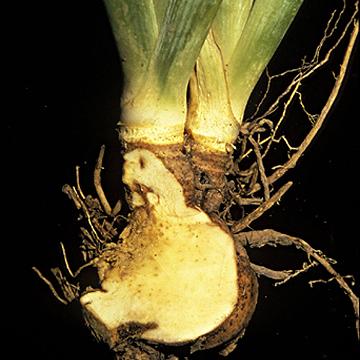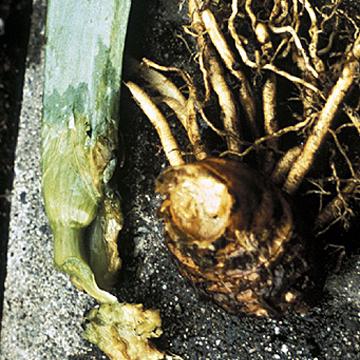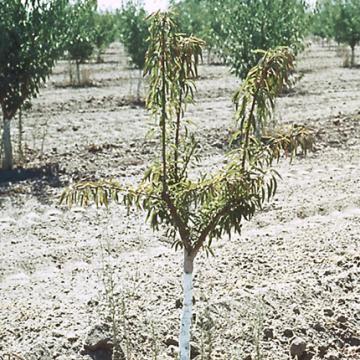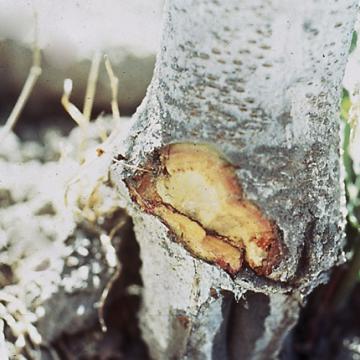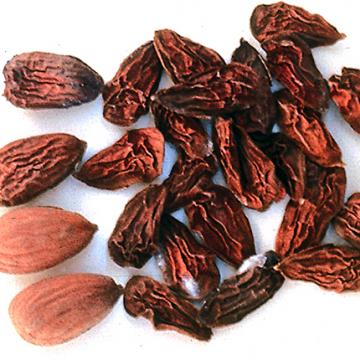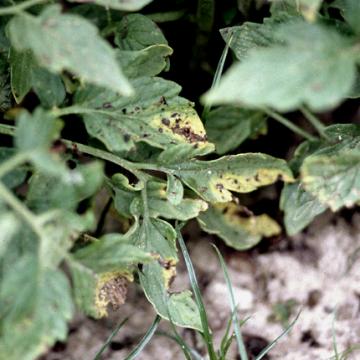DISEASE: Bacterial stem and rhizome rot
HOST: Iris
Iris stem and rhizome with brown, discolored, rotted portions.
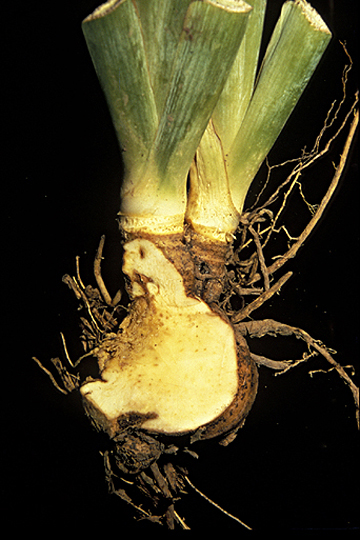
Bacterial stem and rhizome rot | Iris
DISEASE: Bacterial stem and rhizome rot
HOST: Iris (Iris sp.)
PATHOGEN: Burkholderia gladioli pv. gladioli
PATHOGEN SYNONYM: Pseudomonas gladioli pv. gladioli
SOURCE: R. Raabe
DISEASE: Bacterial stem and rhizome rot
HOST: Iris
Mushy rot of stems and rhizomes are characteristic of advanced stage of the disease.
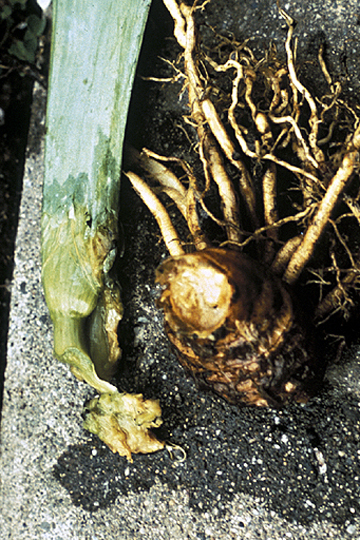
Bacterial stem and rhizome rot | Iris
DISEASE: Bacterial stem and rhizome rot
HOST: Iris (Iris sp.)
PATHOGEN: Burkholderia gladioli pv. gladioli
PATHOGEN SYNONYM: Pseudomonas gladioli pv. gladioli
SOURCE: R. Raabe
DISEASE: Brown line and decline
HOST: Almond
Stunted and yellowish diseased tree. Such trees produce little to no growth and decline rapidly.
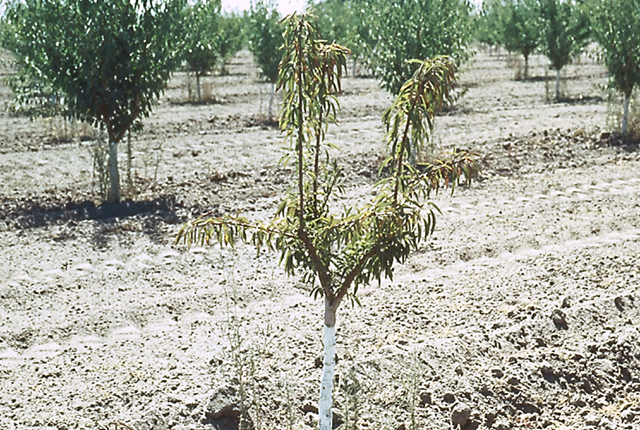
Brown line and decline | Almond
DISEASE: Brown line and decline
HOST: Almond (Prunus dulcis)
PATHOGEN: 'Candidatus Phytoplasma' sp.
PATHOGEN SYNONYM: Phytoplasma (undefined)
SOURCE: B. Teviotdale
DISEASE: Brown line and decline
HOST: Almond
Bark was split laterally at graft union, revealing line of necrotic tissue that extends into woody cortical tissues.
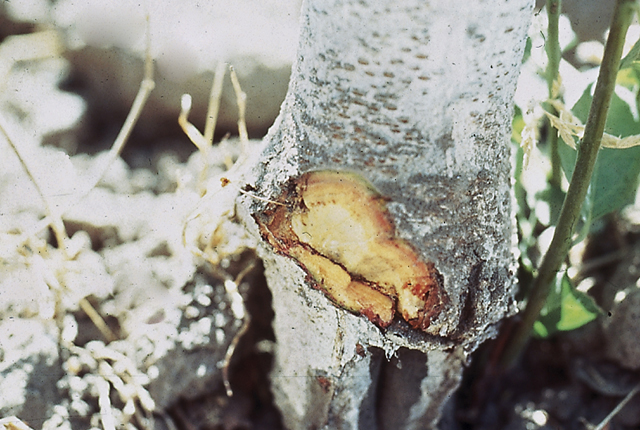
Brown line and decline | Almond
DISEASE: Brown line and decline
HOST: Almond (Prunus dulcis)
PATHOGEN: 'Candidatus Phytoplasma' sp.
PATHOGEN SYNONYM: Phytoplasma (undefined)
SOURCE: J. Uyemoto
DISEASE: Brown line and decline
HOST: Almond
Shriveled nuts from infected tree. Two healthy kernels (bottom left).
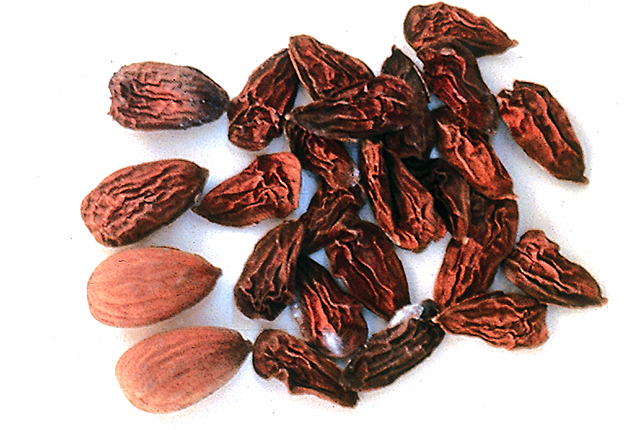
Brown line and decline | Almond
DISEASE: Brown line and decline
HOST: Almond (Prunus dulcis)
PATHOGEN: 'Candidatus Phytoplasma' sp.
PATHOGEN SYNONYM: Phytoplasma (undefined)
SOURCE: J. Uyemoto
DISEASE: Syringae leaf spot
HOST: Tomato
Leaves with brown necrotic lesions and chlorotic margins. Symptoms vary greatly among cultivars. Some have black or brown lesions with bright yellow, chlorotic areas and others do not have yellowing.
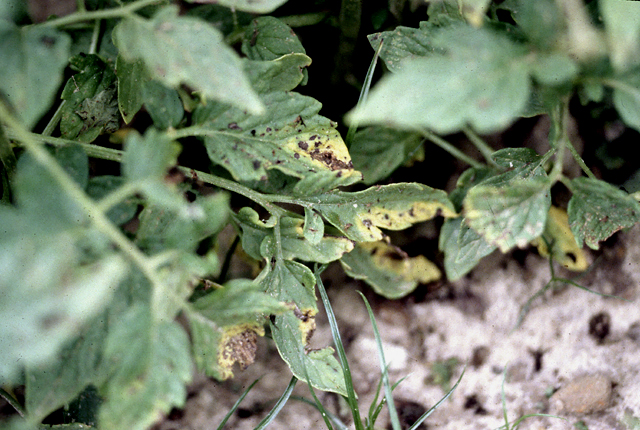
Syringae leaf spot | Tomato
DISEASE: Syringae leaf spot
HOST: Tomato (Lycopersicon esculentum)
PATHOGEN: Pseudomonas syringae pv. syringae
SOURCE: R. Gitaitis


